French chef Dominique Crenn.
The French chef Dominique Crenn is the owner of Atelier Crenn in San Francisco. She's also Eater's chef of the year for 2015.
Her food is careful, delicate and, well, expensive. But she comes from the French region of Brittany, and that couldn't be more different.
"Brittany is this beautiful part of France on the west coast," Crenn says. "If you think about taking a stroll through Brittany, you'll take one not through flat land — it's farmland surrounded by the water. It's very rustic, very raw. It's like a painting. It's cold, it's windy, it could be rainy at times — it's life in itself, nature in itself. There is nothing manicured about it.
"People from Brittany are very proud. They are people who own their land; it's the agriculture, they're farmers — this is where things start. And when you think about Brittany, any political candidate for the [French] presidency will start there, to make sure they get their vote.
"When I think about it, I think about my father. My father was born and raised in Brittany. I think of him sitting on the street outside his house and painting. I think of him as a little Gauguin or Monet, him just enjoying and feeling the surroundings.
"My father was quite a simple eater. He loved food — he was a very classic French person, not very adventurous. But he loved to dine in a way that was a little bit theatrical. He loved oysters, foie gras and grilled lobster. But he was a terrible cook — I mean, he couldn't even make a salad properly!
"My mom and my brother live in Brittany, so I try to go back as often as I can. I go to the beach, smell the water, touch the sand. I eat crabs, Gâteau Breton.
"I need my oysters, my seafood platter — and I just need to be with my family."
Dominique Crenn is the author of "Atelier Crenn: Metamorphosis of Taste."
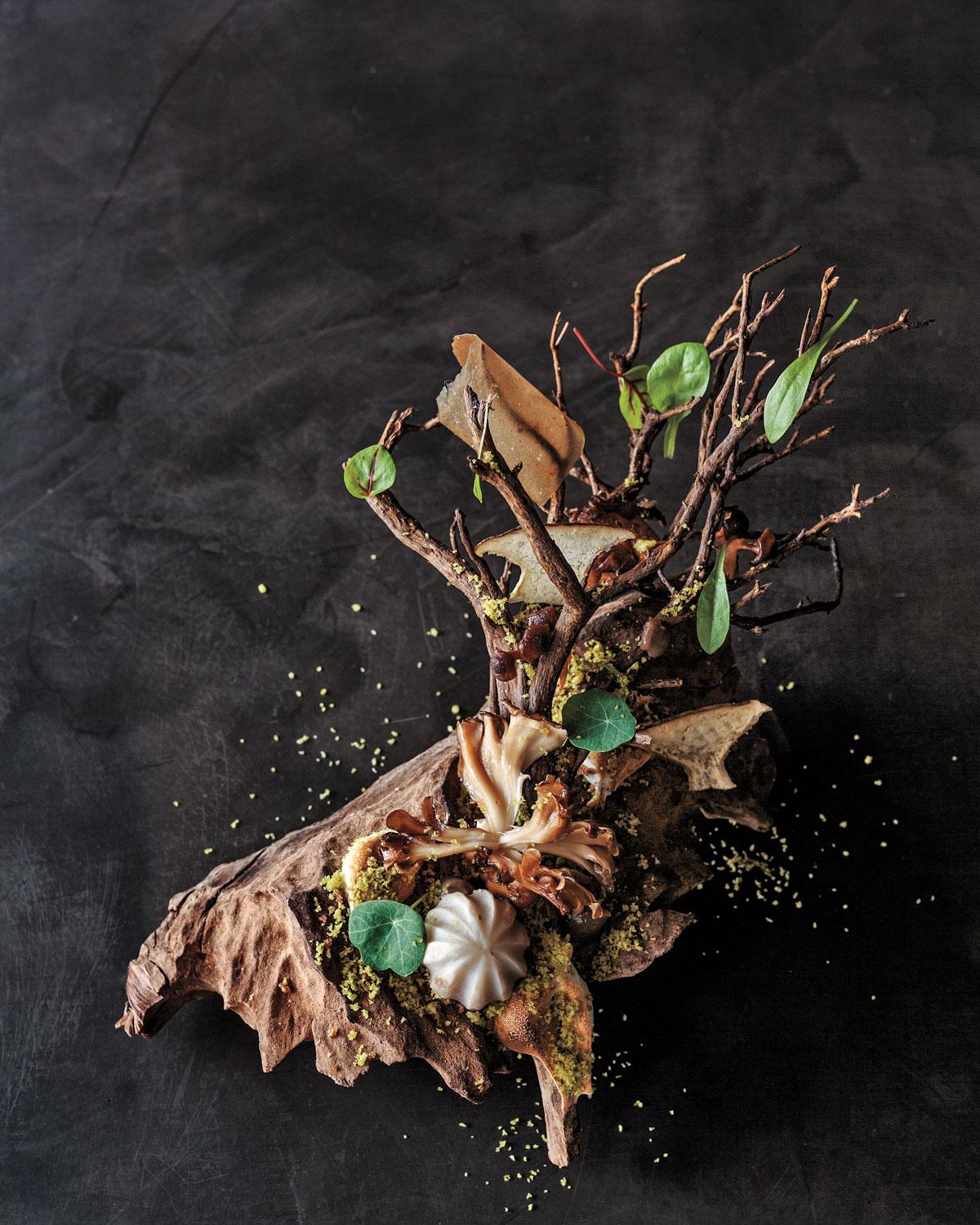
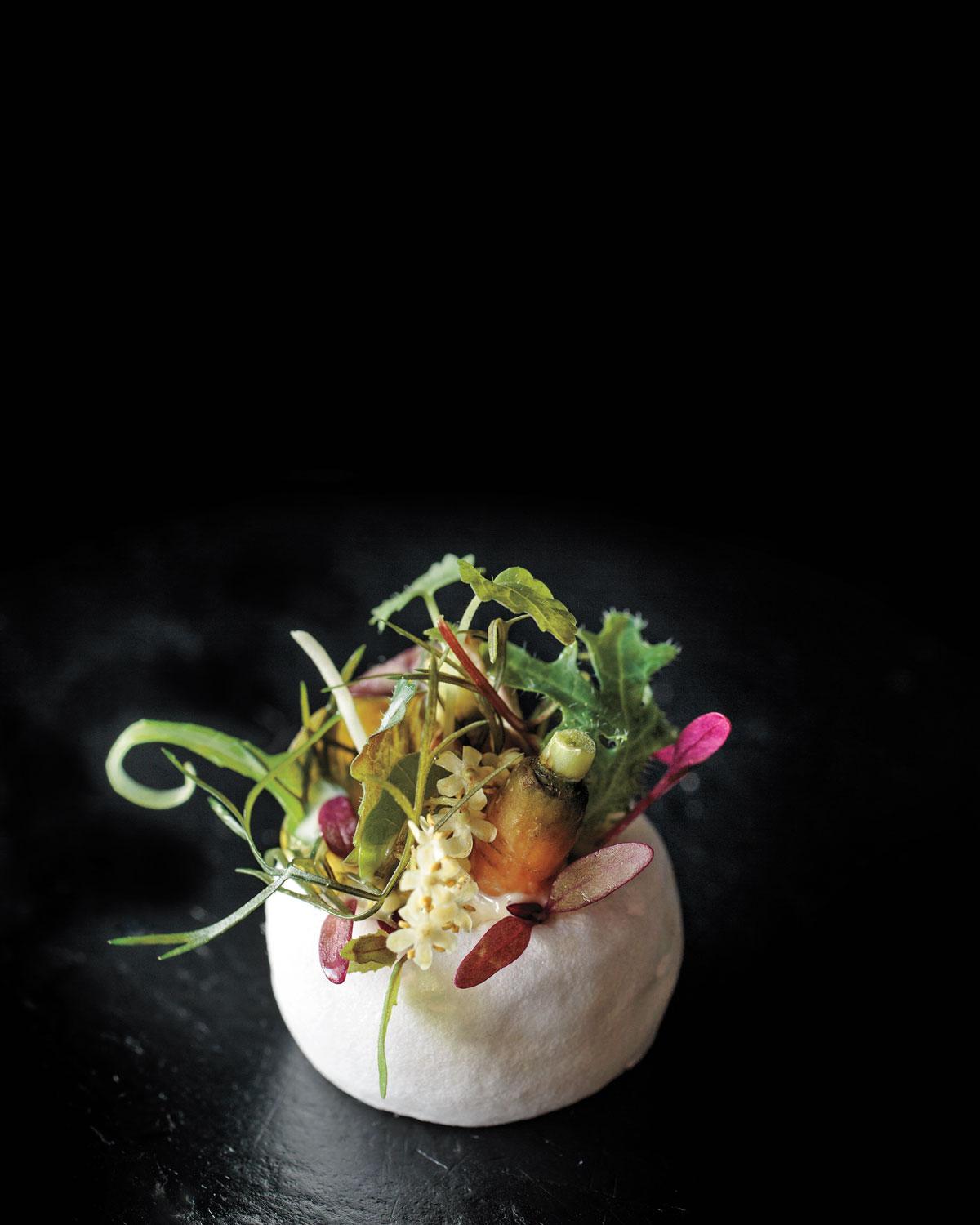
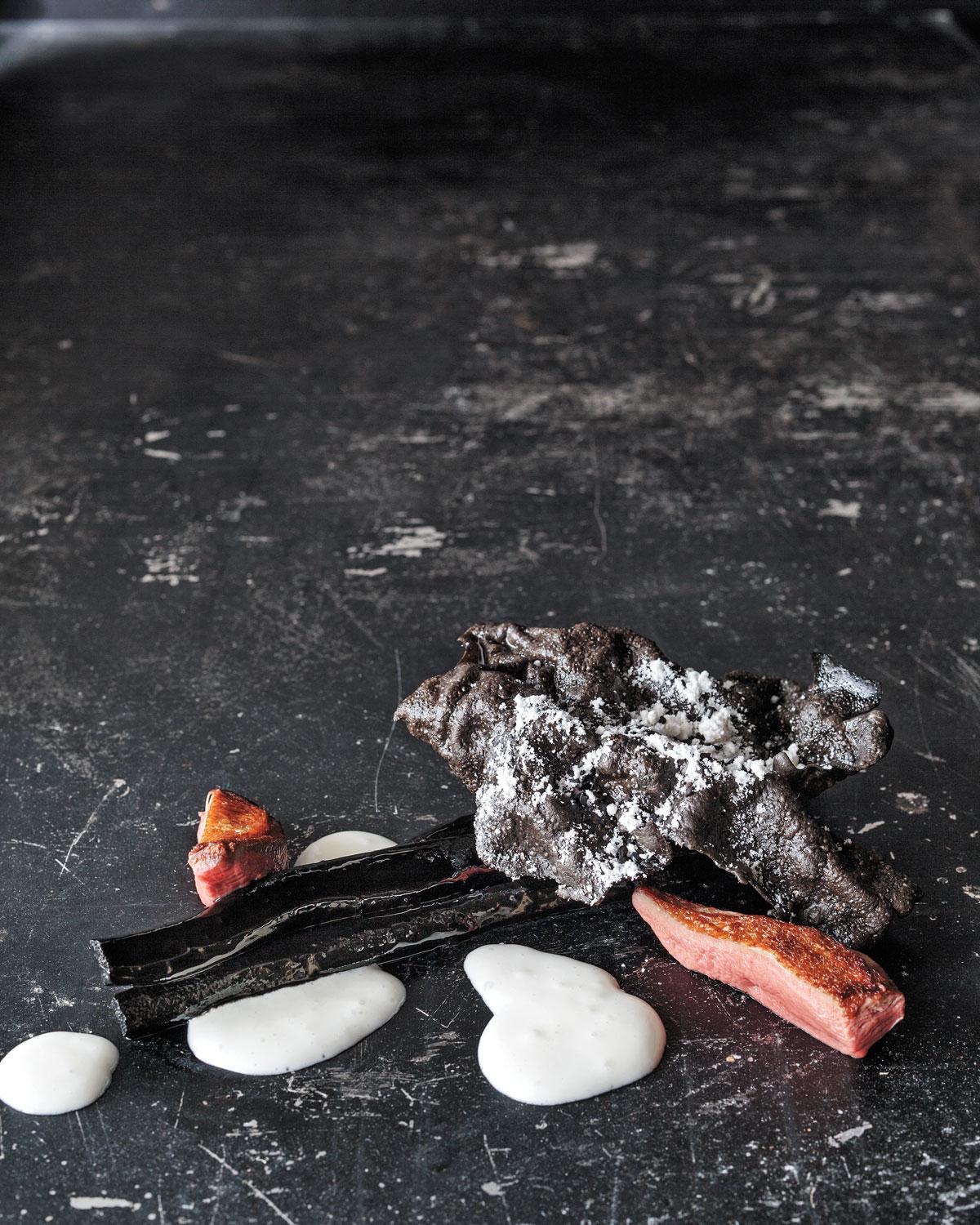
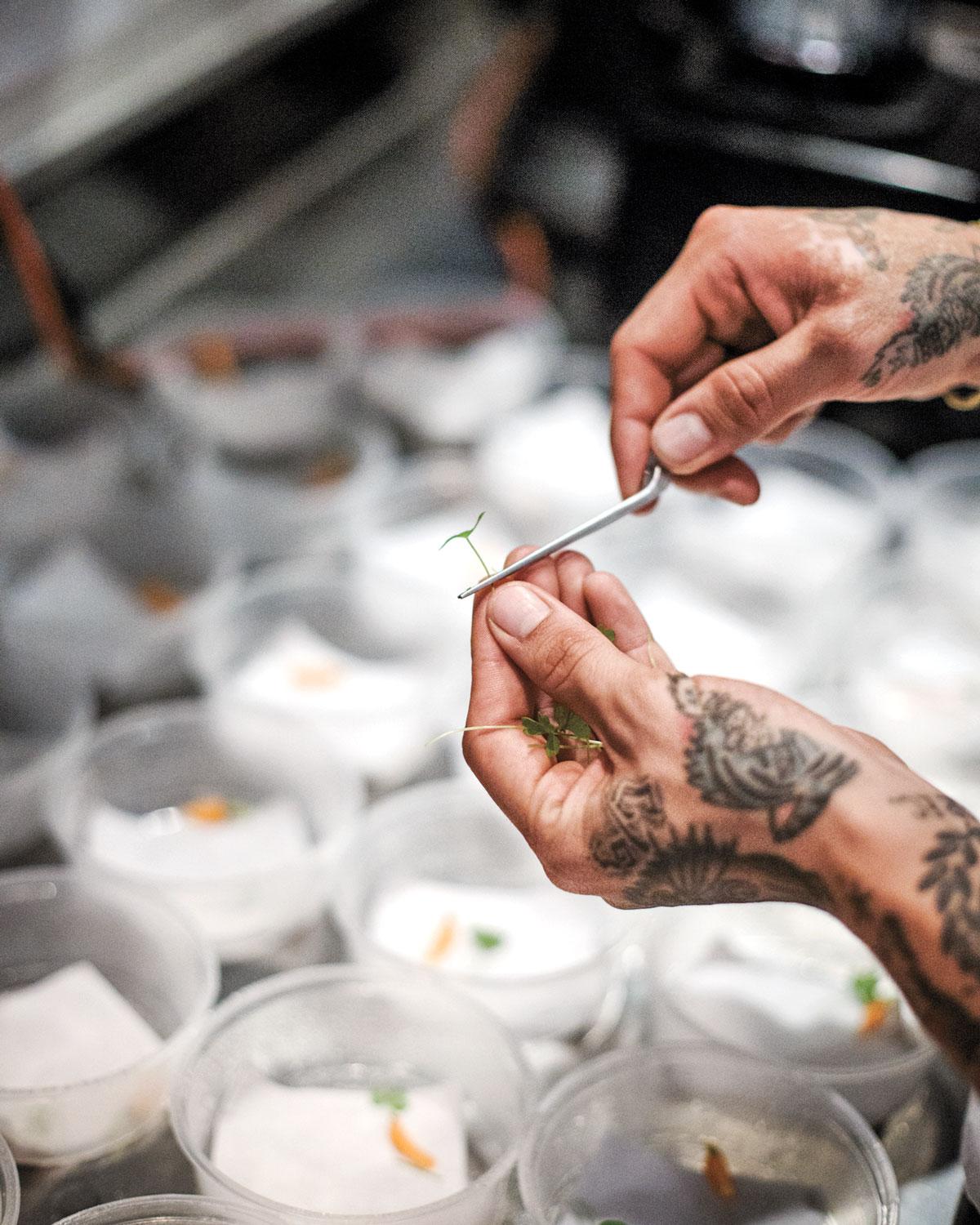
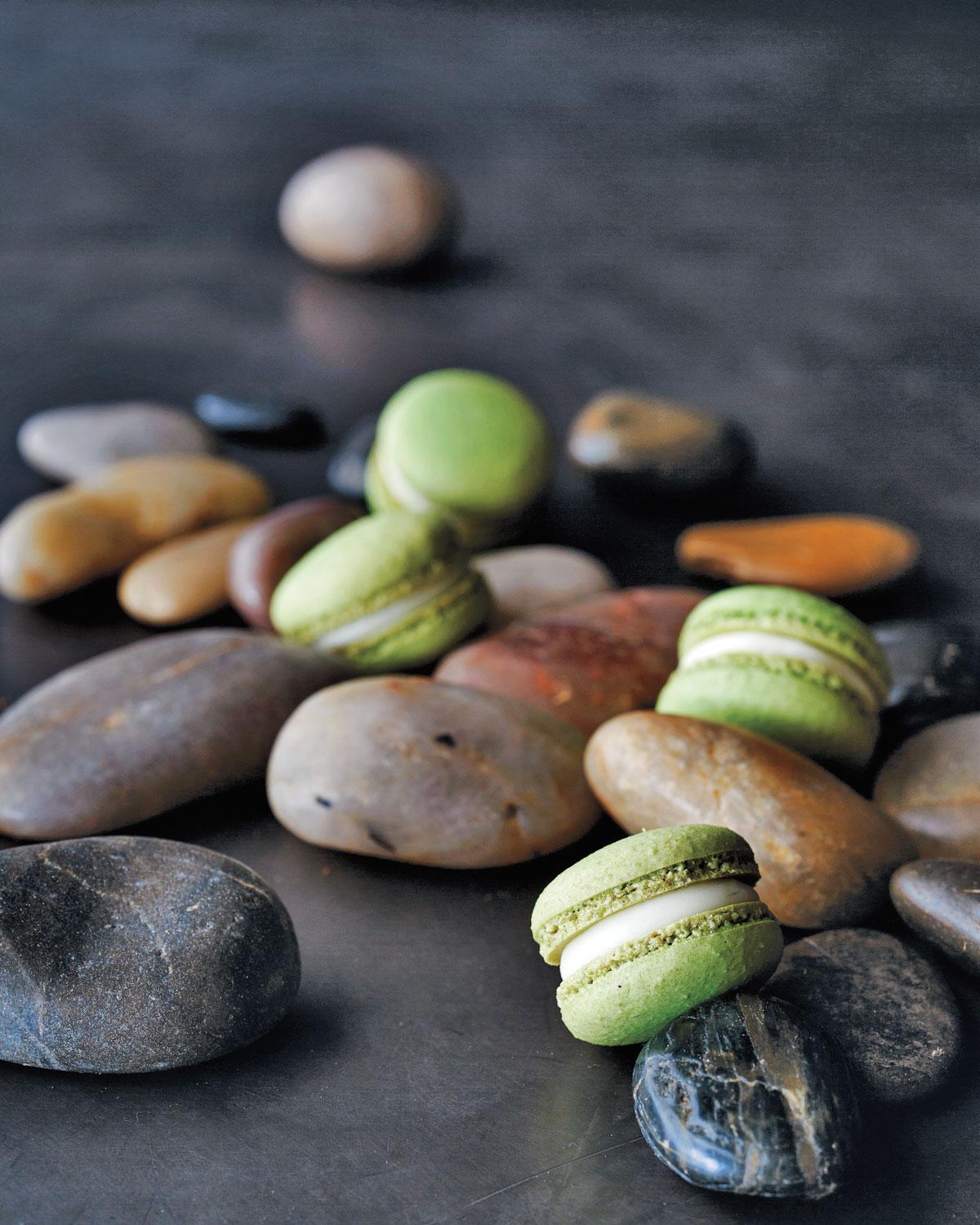
Here's one of the recipes from "Atelier Crenn: Metamorphosis of Taste by Dominique Crenn." Copyright © 2015 by Dominique Crenn. Used by permission of Houghton Mifflin Harcourt Publishing Company. All rights reserved.
Many people don’t realize that most of the flavor in macarons originates with the filling component, rather than the cookie shell. If you were to taste the shells right out of the oven, they might seem overbaked and underflavored, but because we press the shells together with the ganache and allow them to mature in the refrigerator, they soften and acquire the flavor of the filling. The amount of time needed to mature will depend, in part, on the fat content of the filling: We need forty-eight hours to mature the ganache-filled macarons in this recipe, but when we make our raspberry-rose or blackberry-jasmine macarons, they are ready in just six hours, because the moisture of fruit fillings acts more rapidly to soften and infuse the shells with flavor. | Makes 100
Cedar Macarons
INGREDIENTS:
225 grams (2⅓ cups) almond flour
225 grams (1¾ cups) confectioners’ sugar
1½ whole vanilla beans
6 large eggs
225 grams (1 cup plus 2¾ tablespoons) granulated sugar
7 drops green food coloring
135 grams (4.75 ounces) unsweetened white chocolate
110 grams (½ cup) heavy cream
7 drops cedar essence
Kosher salt
3 (6-inch) fresh green cedar branches
EQUIPMENT
Sifter
Stand mixer with whisk attachment
Cooking thermometer
Rubber spatula
2 pastry bags
Teflon or silicone mat
Immersion blender
Pestle
At least 2 days before serving:
- In a large bowl, sift together the almond flour and confectioners’ sugar. Split the vanilla beans lengthwise and scrape the seeds into the almond-sugar mixture. Discard the scraped pods or reserve for another use.
- Separate the eggs, reserving the yolks for another use. (At Atelier Crenn, we freeze our egg whites for 3 days to break down the albumen, then thaw and skim the egg whites so that they are completely liquid and easier to work with.)
- Add 80 grams (2.8 ounces) of the egg whites to the almond sugar mixture and mix together with a spoon. Transfer to the bowl of a stand mixer fitted with the whisk attachment.
- In a medium pot with a cooking thermometer attached, combine the granulated sugar with 55 grams (scant ¼ cup) water. Over low heat, slowly raise the temperature to 118°C/245°F. While the sugar water is heating, add the food coloring to the almond sugar mixture and mix together until thoroughly combined. When the sugar water reaches 115°C/239°F, whip the egg whites in the stand mixer on the highest speed until the meringue holds soft peaks. Once the temperature of the sugar water reaches 118°C/245°F, add the sugar water to the egg white mixture, while continuing to whip for 2 to 3 minutes.
- Turn off the mixer and check the temperature with the cooking thermometer. When the temperature drops to 40°C/105°F, pour the meringue into the almond mixture in three batches, using a rubber spatula to fold just until the batter slowly drips off the spatula and back into the mass like lava, about 5 turns for the first and second batches and 15 gentler turns for the third batch. Do not overmix. Transfer the mixture to a pastry bag.
- Preheat the oven to 165°C/325°F.
- Line a baking sheet or sheet tray with a Teflon or silicone mat.
- Pipe 1-inch rounds of the almond flour mixture onto the Teflon or silicone and let sit, uncovered, at room temperature until a soft skin forms, 25 to 30 minutes. (To test the skin, gently touch the surface with your finger to see if it leaves an impression. The skin will take longer to form in humid or rainy weather.)
- Bake for 12 minutes. Allow to cool completely before removing from the Teflon or silicone mat.
- WHILE THE MACARONS ARE BAKING, MAKE THE GANACHE:
- Fill a small pot halfway with water and heat over low heat. When the water begins to steam, fit a large bowl on top, such that the bowl does not touch the water. Add the white chocolate to the bowl and melt over low heat. In another small pot, scald the cream over medium-high heat. Remove both from the heat and pour the cream into the bowl of melted white chocolate. Use an immersion blender to emulsify until you see a light sheen, about 2 minutes. Season with the cedar essence and a pinch of kosher salt and mix well. Press a piece of plastic wrap onto the surface of the ganache and let the bowl sit at room temperature until the mixture changes from the consistency of pudding to the consistency of frosting, 45 minutes to 2 hours. (Test the ganache periodically with a spoon; the process will take longer in humid or rainy weather.)
- Transfer the ganache to a pastry bag.
- Match pairs of macarons by size and pipe 1 teaspoon of ganache onto the flat side of 1 macaron and press with the flat side of its match.
- Bruise the cedar branches with a pestle to release their oils. Line a sheet pan or baking sheet with parchment paper and lay the cedar branches on it. Arrange the macarons between the branches so that they don’t touch anything other than parchment paper. Tightly wrap the sheet pan or baking sheet with plastic wrap across the top of the branches, without touching the macarons, and refrigerate to mature for at least 48 hours.
We want to hear your feedback so we can keep improving our website, theworld.org. Please fill out this quick survey and let us know your thoughts (your answers will be anonymous). Thanks for your time!
